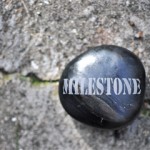To ensure adequate and appropriate reimbursement, rheumatologists must provide detailed information about their services to the people advocating on their behalf. With the proper information, advocates can then do the work necessary to secure the appropriate values for these services. These advocates are members of the Relative Value Update Committee (RUC), a volunteer committee of…
Rheumatology Coding Corner Answer: Coding for Acute Flare of Idiopathic Gout
Take the challenge. M10.072—Acute gout has an Excludes 1 note of chronic gout (M1A.-). This means that acute gout and chronic gout cannot be coded for the same encounter, as the codes are mutually exclusive. M45.6—The patient is diagnosed with ankylosing spondylitis of the lumbar region. M81.8—Other osteoporosis without current pathological fracture. M79.622—The patient has…
Rheumatology Coding Corner Question: Coding for Acute Flare of Idiopathic Gout
It has been two months since the implementation of ICD-10, so everyone has gotten a feel for the new code set. Let’s see how well you are doing in your diagnosis coding for rheumatology-specific conditions. A 55-year-old female patient presents for a follow-up visit of idiopathic chronic gout of multiple joints without tophi. She complains…

Understanding the Z Codes in ICD-10
Two months into the transition, the ICD-10 code set is still not exactly the most enticing reading material. But there is still so much to learn and apply, that it is necessary for physicians, coders and billers to stay abreast of the coding and billing guidelines. Although all of the guidelines and conventions may be…

Revenue Cycle Management in Physician Practice Improves with Staff Communication, Training
One month has passed since the U.S. healthcare system overcame a historical milestone with the conversion from billing ICD-9-CM to ICD-10-CM. Although the transition to ICD-10 had a major impact on coding operations, its far-reaching tentacles go beyond coding alone and are deeply rooted in the entire revenue cycle. There is room to criticize the…
Rheumatology Coding Corner Answer: Proper Coding for Post-Traumatic Osteoarthritis
CPT: 99213, 73500-RT, 73500-LT ICD-10: M16.52 This E/M service entailed: The history is detailed; The examination is expanded problem focused; and The medical decision making is of low complexity. The X-ray reviewed was for radiologic examination, hip, unilateral: one view for the left hip and for the right hip. M16.52—The diagnosis identifies unilateral post-traumatic osteoarthritis…
Rheumatology Coding Corner Question: Coding for Post-Traumatic Osteoarthritis
Post-Traumatic OA A 70-year-old female patient comes in for a follow-up visit for pain and stiffness in her left hip. She injured her hip in a skiing accident three years before and reports the X-rays at that time showed no fractures. Due to no obvious fracture at the time, she was given ibuprofen and advised…
Use of Unspecified Codes in ICD-10: What You Need to Know
The ACR Practice Management and Coding department will periodically update the membership on the new ICD-10 coding guidelines and conventions to assist practices with accurate billing. Our top question during the first week of ICD-10 implementation was on the use of unspecified codes…
Rheumatology Coding Corner Answer: Coding for a Knee Injection
Take the challenge. CPT: 20611-LT, J7325 X 1 ICD-9: 715.16—Osteoarthritis, localized, primary, lower leg ICD-10: M17.12—Unilateral pri- mary osteoarthritis, left knee Note: When billing for 20611—Arthrocentesis, aspiration and/or injection, major joint or bursa (e.g., shoulder, hip, knee, subacromial bursa), with permanent recording and reporting, there must be a permanent photograph of the needle placement in…
Rheumatology Coding Corner Question: Coding for a Knee Injection
Coding for a Knee Injection A 68-year-old female patient with primary osteoarthritis of the left knee returns to the office for her scheduled hyaluronan injection. The patient reports that her knee is a little tender, but on a scale of 1–10, it is a 4. She is stiff in the morning for 10–20 minutes. The…
- « Previous Page
- 1
- …
- 7
- 8
- 9
- 10
- 11
- …
- 39
- Next Page »